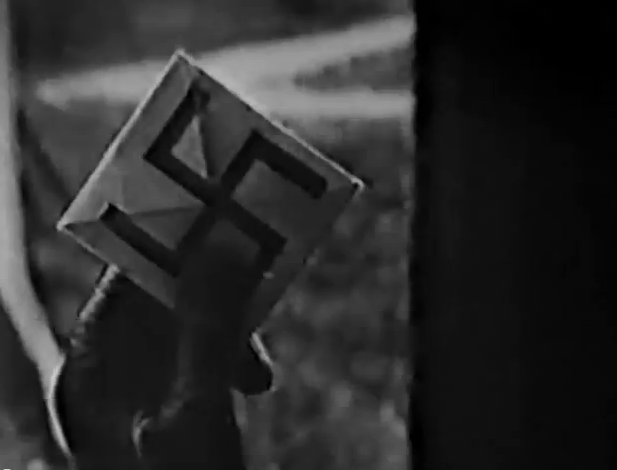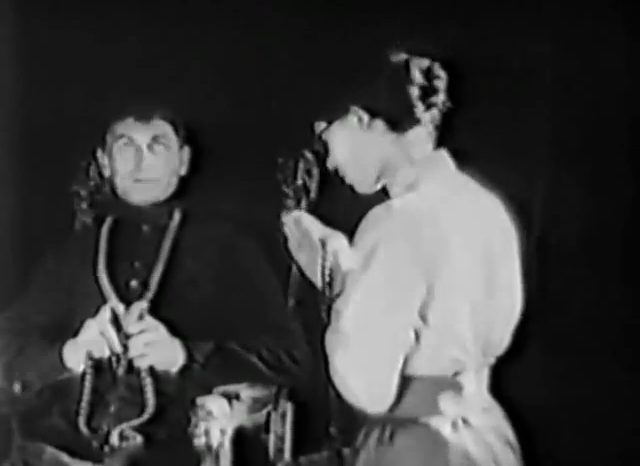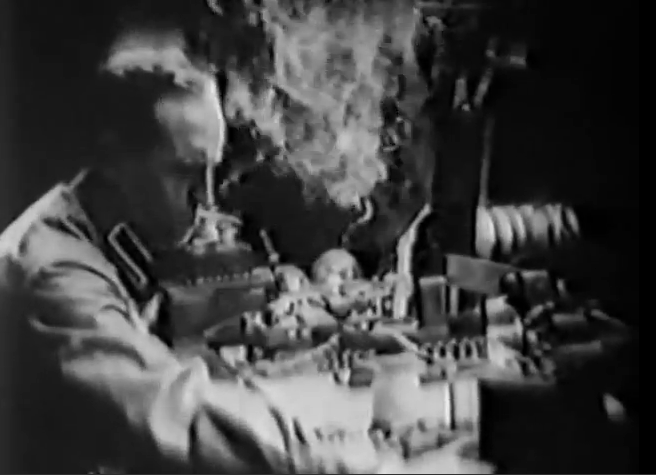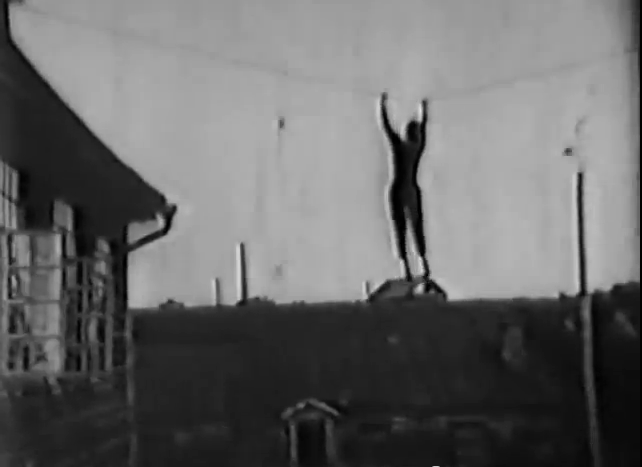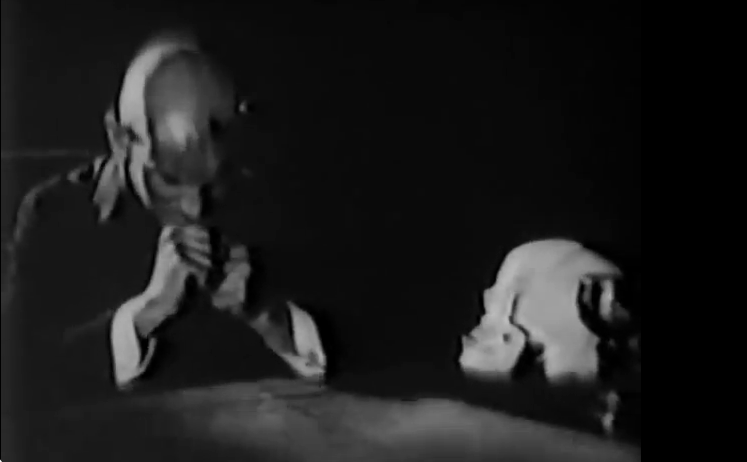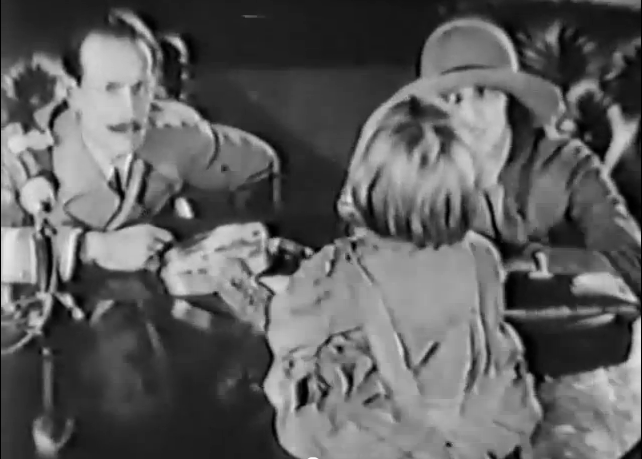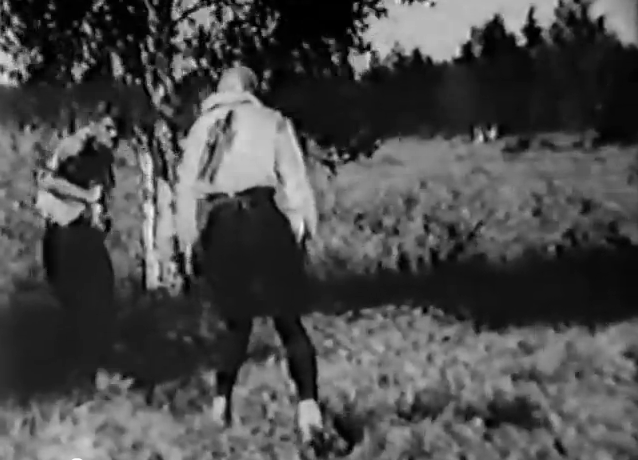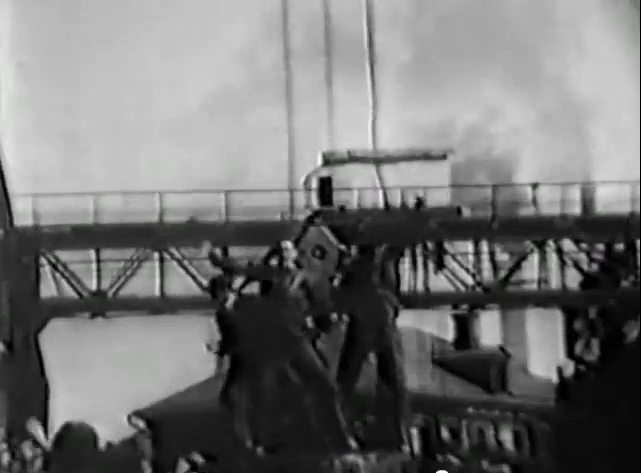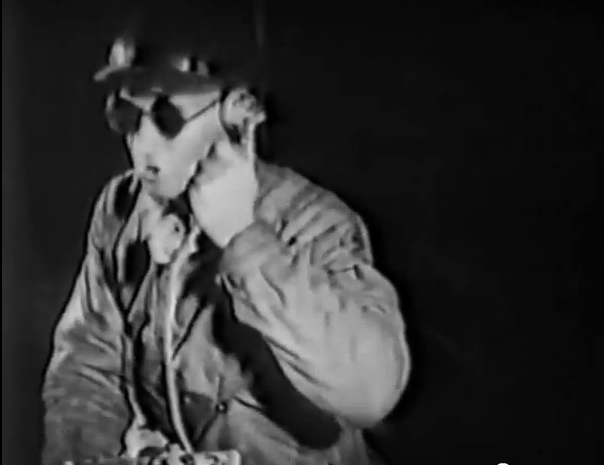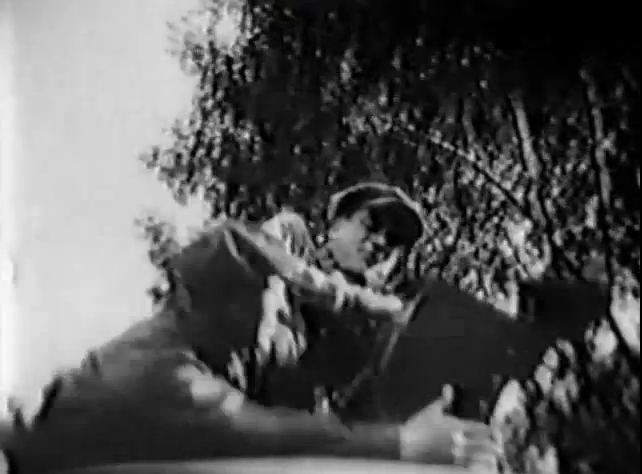-
#14 – The Death Ray (1925)
The Death Ray (1925)
Film review #14
Director: Lev Kuleshov
A Soviet sci-fi spy thriller from the 20’s packed with action…
In an unnamed “fascist” country, Tomas Lann is imprisoned at a “helium factory”, but manages to escape during a revolt. He flees to the home of Professor Podobed, where he wishes to get the “death ray” he has been working on to fight the fascists. However, one of the fascists, Father Revo, breaks into the Professor’s home and steals the death ray. Lann then chases down another one of the fascists named Fog in order to get the death ray back.
First, I should note that there is no English translation for this film, so my understanding of the movie is a bit limited, and as you can see from the stills above, the only surviving copy of the film is a bit poor in quality. Nevertheless, ever since I heard about this movie, I’ve wanted to watch it. Apparently, there are portions of the movie missing as well, which makes it even harder to understand the narrative.
This movie offers a different take on filmmaking in the 1920s. Before even Metropolis was released, The Death Ray (Luch Smerti in Russian) was released in the USSR, a film by “popular” Soviet filmmaker Lev Kuleshov. Film making in the USSR at this time was tightly regulated by the government, and apparently this film was criticized greatly by them because of a lack of soviet propaganda, and it was too “American” in terms of its production, with a lot of focus on stunts and action.
On that subject, the sheer amount of action in this movie is insane. The actors are jumping from 3-story buildings, hanging from wires suspended on rooftops, crashing through tables and doors, jumping from moving cars, falling down stairs and even running towards oncoming trains and lying down on tracks in front of them, with the train changing tracks at the last second. Now, I’m pretty sure there were no stunt doubles in this movie (or at all back then), so these actors must have been made of strong stuff, and had no sense of fear when filming these sequences. The action takes place in car chases, bike chases, and even a plane sequence, all culminating in a gun/knife fight at the end. Perhaps one of the reasons it is hard to follow the plot is because there is a lot more emphasis on action.
Throughout the film, the so-called “facist nation” is labelled as the antagonist of the film, and although no actual name is given to it, the use of swastikas throughout the movie by them strongly indicates that it is probably Germany or a mid-Europe country. This of course, would serve the USSR regime of painting the Europeans as an enemy of the soviet union rather nicely. Obviously the nazi movement was still in its early stages in 1925, but clearly it was still something the USSR wasn’t very keen on. Looking back on it in the present, we can see this film in the wider context of soviet life, and how they perceived other countries. Another interesting aspect to this is the leader of the fascist nation: Father Revo, is seen as a religious leader. This again puts it in line with the soviet objective of eliminating religion, and portraying the antagonists as religious in this movie tows the USSR’s policy very well.
The film ends with Lann retrieving the death ray and using it on the enemy fighter planes, and finally liberating the prisoners of the factory where he first escaped. Though we never get a close look at the death ray (It is always locked up in a box), the idea of such a weapon being used to bring down the enemies of the USSR was a nice way to end a movie like this which was used as propaganda by the government.
Apparently this movie was also screened in America, though it is difficult to find where and when. I wonder what Americans thought of such a movie, riddled with the Hollywood action sequences and developed on the other side of the world? Either way, the death ray is a rare example of soviet cinema that may lack in plot, but more than makes up for it in terms of action.
